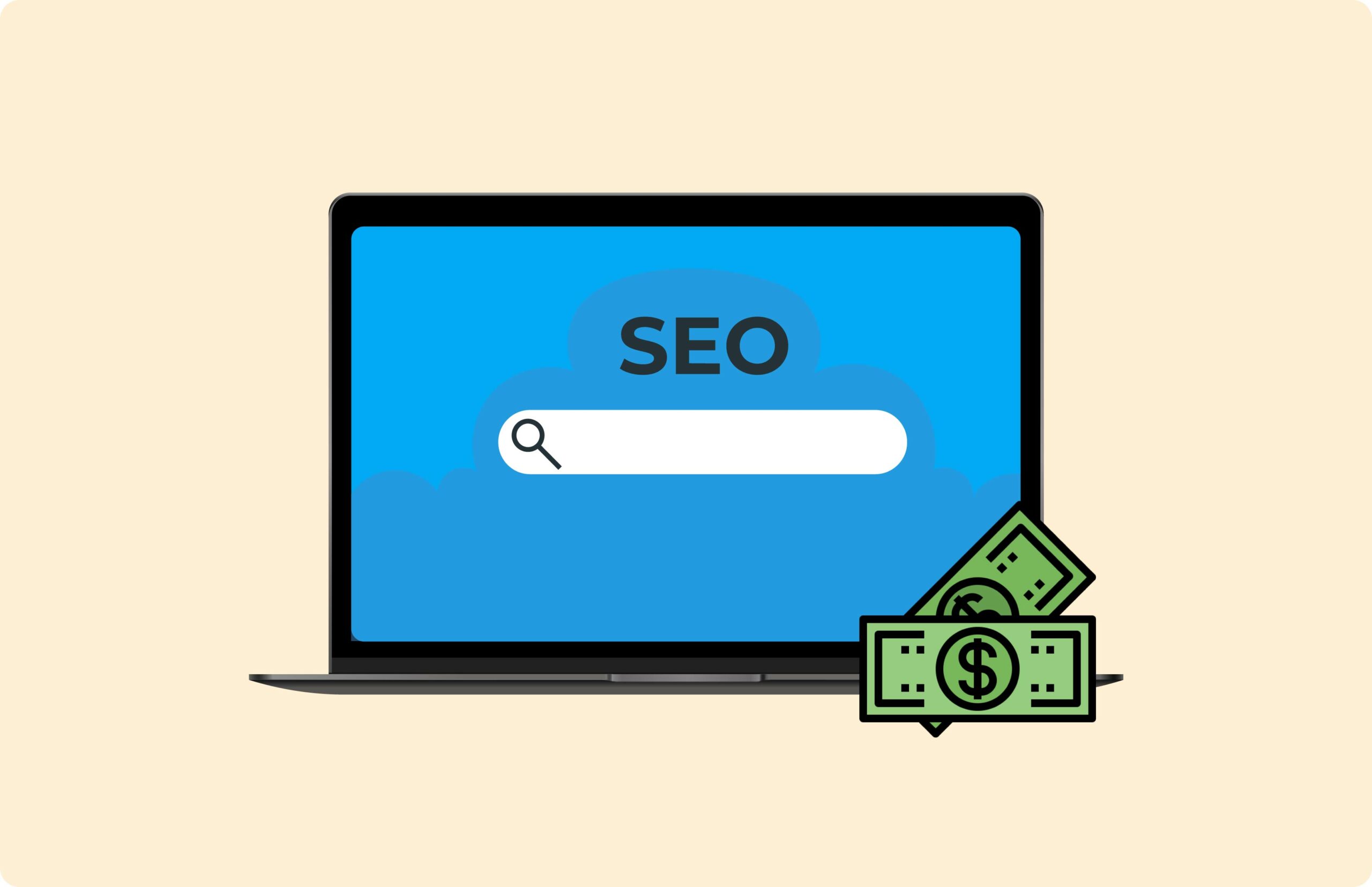SaaS Link Building: Step-by-Step guide to link building for SaaS companies
SaaS Link Building: Step-by-Step guide to link building for SaaS companies
SaaS (Software as a Service) is one of the fastest growing industries in the world by 2024. But what is it? This is a cloud service delivery model that has already become an integral part of our lives. You’re definitely familiar with a lot of SaaS companies, even if you think you’re not. For example, Netflix is the service we subscribe to watch movies and series at home, and Slack helps us stay in touch with our team at work. We will also remember Zoom, which in 2021 saved a lot of businesses, and became inseparable during remote work and training. Canva, which is now used to create most designs for social media, banners, business cards, and more, greatly simplified the work and reduced the load on computers that barely dragged Photoshop. SaaS is all about convenience, affordability, and technology that’s always around, which is why it’s still so popular.
The popularity of such companies is also due to the digital transformation of business, when more and more companies are switching to cloud services to automate processes, reduce costs and increase efficiency. However, along with popularity comes competition. Every day, new products enter the market, and potential customers are increasingly lost choosing from among many similar services.
Under these conditions, SaaS companies face a huge challenge: how to stand out from the competition? One of the most effective ways is link building, a strategy of building a quality link profile to improve visibility in search engines. Google considers the quantity and quality of backlinks as one of the most important ranking factors.
SaaS in numbers: Why this segment needs link building
The modern SaaS market with its competition is very fierce. Here are a few facts that highlight its scale:
- The global SaaS market in 2024 is estimated at more than $260 billion, and by 2030 this figure may exceed $700 billion.
- Every year, more than 15,000 new SaaS products appear, each of which is trying to win the attention of customers.
- About 73% of companies worldwide already use at least one SaaS tool in their work, and this number is growing every month.
You won’t even know about most SaaS products. A huge part of newly created promising SaaS projects will not find their customers and will be forced to close. And the market will be dominated by industry giants. What does this mean for marketers and SaaS business owners now?
- Search competition is breaking records: Most SaaS companies rely on organic traffic to attract customers. However, tens of thousands of companies compete for high-frequency key queries such as “Project management software” or “CRM for small businesses”. That is, it is not enough to use ordinary SEO promotion measures.
- The cost of paid traffic is increasing: Advertising is becoming more and more expensive. For example, the cost per click (CPC) in Google Ads for the SaaS industry can exceed $50 per query. You won’t get far with such expensive paid advertising. Link building allows you to reduce costs by focusing on long-term promotion results.
- Importance of credibility: SaaS companies are often chosen by customers looking for a reliable partner. The more authoritative sites link to your product, the more credibility your brand has.
Link building is not just a way to improve your Google rankings. It is a tool for building trust, building reputation and attracting a target audience.
A study by Ahrefs found that SaaS platforms with a high Domain Rating (DR) average 67% more organic traffic than their competitors with a low DR. This once again proves the importance of working with links for SaaS companies.
Peculiarities of link building for SaaS companies, which should be taken into account in the strategy
What we have already understood about the SaaS niche: high competition and oversaturation of the market forces us to come up with unique solutions to promote products. Therefore, unlike the traditional approach to link building, SaaS link building focuses exclusively on niche sites related to the industry, such as specialized blogs, forums, review platforms and high authority sites.
The main goal of this strategy is to build a network of quality and relevant links that not only attract the attention of your target audience, but also signal to search engines about the reliability and expertise of your site. This approach allows you to increase visibility in Google, attract more organic traffic and strengthen the reputation of your SaaS product in the eyes of both customers and search algorithms.
Resources that reflect the specifics of the industry and attract the attention of CAs are relevant for SaaS link building. These can be:
- Specialized technology blogs are sites where new products and trends in SaaS are discussed, such as TechCrunch or VentureBeat.
- Review sites and directories are platforms where users rate and compare SaaS solutions, such as G2, Capterra or TrustRadius.
- Niche forums are places where experts discuss problems and search for solutions, such as Reddit.
- Guest Posts – Articles that address audience concerns and offer SaaS as a solution, such as on the HubSpot Blog or MarketingProfs.
- Educational content resources – webinars, online courses, or blogs that explain how to use SaaS products, such as Coursera or Udemy.
- Infrastructure Partner Sites – For example, if your SaaS integrates with another product, you can link to the partner’s pages.
This is by no means a complete list of where to post links for SaaS companies, it is an example to understand which direction to move in this industry. The key to effective link building is to choose sites that have high authority and meet the needs of your target audience.
Places to publish links vary depending on the type of SaaS product, its target audience and the specifics of use. For example, the link building platforms for Netflix will be significantly different from those suitable for Zoom.
So, for Netflix, which is focused on the consumer segment (B2C), blogs about entertainment, cinema and home recreation, such as FilmAffinity, Rotten Tomatoes or popular lifestyle publications, will be relevant. Forums or sites for movie lovers and streaming platforms are also appropriate.
Instead, for Zoom, which is aimed at a business (B2B) audience, corporate blogs, technology sites that discuss remote work tools, such as Forbes, Business Insider, TechRadar, will be more effective.
Thus, the choice of platforms should take into account the interests of the target audience and the direction of the product in order to ensure maximum relevance and effectiveness of link building for SaaS projects. This niche is better taken by the quality of links than by their quantity.
Link building guide for SaaS companies (step-by-step link building plan)
Placing quality links is a complex and multi-step process that requires a careful approach, knowledge of the niche and understanding of the needs of the audience. Our team has spent years perfecting this skill, but if you want to do it yourself, we’ll give you a step-by-step guide on how to do it. Let’s take a step-by-step look at how to create an effective referral strategy for SaaS companies.
- Analysis of the niche and competitors
Start by understanding the market in which your SaaS product operates. While you may already know your competitors, it’s essential to conduct deeper research. Analyze competitors from other regions, explore substitute products, and investigate public perception of your product on platforms like Reddit. What is the best way to start this research?
- Identification of competitors, not only those who occupy high positions in search engines, but also those who are developing, because they can unexpectedly emerge as market leaders. For example, if your product is a project management platform, your main competitors might be Asana, Trello, or Monday.com, but they may all be overtaken by a new solution soon.
- Research where they link: which blogs, review sites or affiliate resources they use to promote. Tools like Ahrefs or SEMrush allow you to analyze your competitors’ link profile to find their best sources. So you can find out where competitors are published, how they do it and how often. You will be able to see the anchors, their articles, how they position themselves there, and what methods give results.
- Studying the content they publish on their own and on third-party resources. For example, if your competitors are actively writing articles on the topic “How to choose a CRM for small business”, this is a signal that this topic is of interest to your audience. You can also look at the comments on such articles and see what interests the audience, or Google questions on forums and see what is unclear to people or needs further explanation.
- Search for relevant sites
After analyzing competitors, proceed to the selection of sites where your links will be most effective. In the SaaS niche, it is important to focus on platforms that have high authority and are relevant to the topic. As an example, it can be:
- Technology blogs TechCrunch or VentureBeat.
- Review platforms G2 or Capterra, where potential customers are looking for a comparison of SaaS solutions.
- Thematic sections of Reddit or Quora.
- Focused business resources covering productivity, automation or team management.
Manually searching for platforms using Google with queries like “name of your niche + guest post” or “top platforms for reviews” can also yield great results. Make a table, write to the webmasters and notice what they replied to you, indicate the price, conditions – in order to ultimately choose the most profitable solution and then return to it. Try to find out about free placements, maybe they will nominate a special. Conditions – but this is not very relevant for 2025.
- Selection of topics and preparation of content
Links are effective only when they are organically integrated into useful and interesting content for the audience. After selecting the sites, determine the topics that will be relevant to your SaaS solution, consult with the sites that usually “fly over” the audience.
Use tools like BuzzSumo or AnswerThePublic to find out exactly what your potential customers are looking for.
For example, if your product is an HR platform, topics such as “Recruitment Automation” or “Tools for Remote Teams” might be popular. There is also a boom in publications about AI solutions in various industries.
Be sure to create content that meets the site’s standards. For example, for guest posts on a blog, it is important to consider the style and structure of articles already posted on this resource.
- Communication with webmasters
Effective cooperation with site administrators is a key step. First, prepare personalized pitches in which you clearly explain why your article or link will be useful to their audience. We emphasize that personalized messages have a higher response rate. How we recommend building your message:
- Emphasize how your content adds value. If it’s an overview of SaaS solutions, show how it complements the existing content on the site. Or you can even find a ready-made article where a link to your solution will fit.
- Suggest some ideas for articles or formats. For example, “Why SaaS solutions are becoming popular among small businesses” and write there how your service helps businesses, replaces several employees, saves money.
- Remember that webmasters get a lot of requests, so your offer should be unique and specific. It is better not to indicate in the subject of the letter that you want a link, veil it and make them interested in opening the message. For example, “Error on the site” – and in the text write “Your article about SaaS solutions for personnel management does not have XXX service, although it is very popular. What terms do you propose to fix this and add this service with a link to it.”
- Creation of quality anchors
Anchor text (link text) should be clear, relevant and SEO friendly. For example, for a CRM platform, instead of general phrases like “click here”, it is better to use something more specific, for example, “the best CRM for small business”.
- Placing links and testing
Before you start deploying at scale, run a test phase. Choose several platforms with different conditions (for example: free and paid, Ukrainian and foreign) and place the link. It is important to check:
- How quickly search engines take these links into account.
- How much traffic they bring.
- How they affect your position in Google.
After testing and receiving feedback, you can proceed with this approach or make adjustments to your strategy. For example, you might replace platforms, anchors, or publication language. We also recommend creating a separate table where you will enter posted links, check them and track them. Some unscrupulous webmasters often remove links if they are not requested by an agency, because they lose almost nothing, but only clean up redundant links. When he cooperates with the agency, he will receive termination of cooperation and lose from 5,000 dollars for the wear and tear of the link. per year, so such tricks work only with one-time appeals.
- Monitoring and evaluation of results
Work with links does not end at the stage of their placement. Continuous monitoring is critical to assess their effect. As mentioned above, it happens that links are removed.
In addition to your spreadsheet, use tools like Ahrefs, Moz, or Google Search Console to check your link profile.
Track whether links remain active and meet your requirements. Analyze indicators: traffic growth, changes in positions in search engines, volume of referral traffic.
- Cost analysis and scaling
At this point, your tracking sheet will become particularly useful. Calculate the costs for each site and evaluate their effectiveness. For example, if a link from platform X costs $300 and only brings a few visits, it might be worth investing that money in another resource.
If the strategy shows good results, gradually scale it by adding new venues and increasing the amount of content. Avoid purchasing many links all at once, for SaaS solutions you should use delicate gradual link building instead of aggressive strategies.
Link building for SaaS companies is a strategic and gradual process. This is one of the few directions that will allow you to get ahead of the competition in an oversaturated niche. A methodical approach at each stage will ensure the successful promotion of your SaaS product in this highly saturated market.
Takeaways from Link Building for Niche SaaS
Let’s summarize the conclusions. Building quality backlinks is an integral part of the successful promotion of SaaS companies. In today’s digital world, where the competition is only growing, the effective use of link building allows not only to increase the ranking in search engines, but also to significantly improve the visibility of the brand. Industry leaders like Freshdesk and Shopify have long integrated link building strategies into their marketing campaigns. Their success demonstrates that a strategic approach to link building can be a game-changer for SaaS businesses.
SaaS link building involves creating useful, valuable content and sharing it on relevant platforms. These can be thematic blogs, analytical articles, industry reviews or even special tools and reports.
Some of the most effective link building strategies include guest posting, partnering with niche web resources, and writing content that is itself a customer magnet.
Search engines see links as signals of trust. At the same time, it is important for SaaS companies to take into account such indicators as domain authority, the variety, and relevance of the platforms that provide links, as well as anchor text. These details can significantly affect the effectiveness of link building in this niche.
Link building is not a one-time event, but an ongoing process. In order to remain competitive and maintain a high position in search engines, companies must regularly work on obtaining new quality links. It is also important to monitor the results: how organic traffic changes, how keyword positions improve, and the overall value of acquired links.
If you don’t have the time or resources to build your own links, we can help you with a quick and efficient placement. You can start building links today with us or on your own with our step-by-step guide. Gradually, you will build a strong network of backlinks, which will become the basis for the successful development of your SaaS business.





